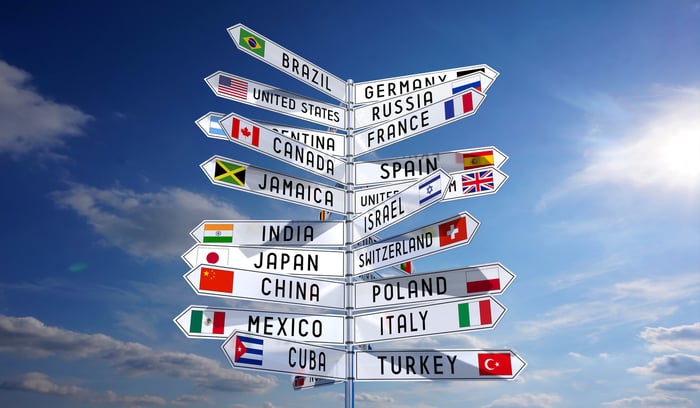For many, the name PepsiCo (PEP 1.65%) brings to mind soda, which is what the company is named after. What some of those many tend to overlook is that this company expanded well beyond its core product, notably with the Frito-Lay business it runs. As investors look at the overall company today, the tendency is to view the company as stable and mature. Some of those same investors ask: where is future growth going to come from?
Pepsico is a huge business
PepsiCo is a consumer staples giant sporting a massive $230 billion market cap. When you look at the brands the company owns, however, the size here makes sense. There's the beverage business, which includes brands like Gatorade and its namesake Pepsi, that generates $6.6 billion in revenue per quarter in North America alone. There's FritoLay, a giant in the snack space, with quarterly revenue of around $5.5 billion in North America. And Quaker Foods, with iconic brands but a relatively modest quarterly revenue haul of $700 million in North America. Europe, across all of PepsiCo's products, brings in another $3.6 billion.

Image source: Getty Images.
These are big numbers and represent the foundation on which the company has historically grown. Together these four revenue sources accounted for over 90% of operating profit in the third quarter of 2022. Clearly, these are the most important businesses for the company by a wide margin.
There's only one problem. All of these markets are mature, so future growth will be hard to come by. Competition is also likely to be very intense. While it is important for long-term investors to keep a close eye on these divisions, the really exciting news is likely to come from the less than 10% of operating profit that's left to account for.
Hitting the accelerator
The rest of PepsiCo's revenue and operating profit comes from three divisions: Latin America; Africa, the Middle East, and South Asia; and the Asia Pacific, Australia, New Zealand, and China Region. While there are some mature markets in this mix, the vast majority of these regions fall into the emerging market space. Essentially, that means smaller countries, financially speaking, where consumers are still moving up the socioeconomic ladder. And that means they have an increasing ability to afford soda and snacks.
This isn't just a long-term theme; it is one that's playing out today. For example, through the first nine months of 2022, volume fell 1% in Frito-Lay North America and Quaker Foods North America, with a slim volume gain of 1% in the North American beverage business. European volumes declined in the mid-single digits on both the food and beverage side. But food-related volumes rose in the mid-single digits across all of the emerging markets and high-single digits to double digits on the beverage side.
To be fair, price increases to counter outsized inflation helped push the consumer staples giant's organic sales up in every division. But it should be pretty clear that there is a different story unfolding between developed markets and emerging markets. This is not a unique issue in the food or beverage spaces. For example, Unilever (UL 0.34%), which also makes products outside of the food space, generates roughly 60% of its revenue from emerging markets. Kellogg (K 0.84%) is jettisoning its U.S. cereal business so it can increase its exposure to faster-growing emerging markets.
The reason why Unilever and Kellogg are doubling down on emerging markets is the long-term growth potential in areas that are underserved by the dominant global brands they own. And while PepsiCo isn't in the same position portfolio-wise, its emerging market exposure is highly likely to be a vital long-term growth driver over time. That means that investors need to pay close attention to what are now the company's smallest businesses.
Core and explore
PepsiCo has a great collection of mature businesses, and there are a lot of reasons to love it for that alone. But how these cash-cow operations are used to fuel the opportunities in emerging markets will be an increasingly important dynamic for long-term investors to watch in the years ahead. The company's growth engine has matured, but there's still plenty of life left in this giant as it looks to expand its brands in smaller markets.





